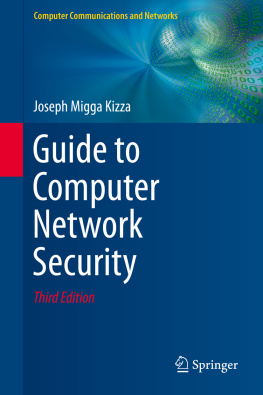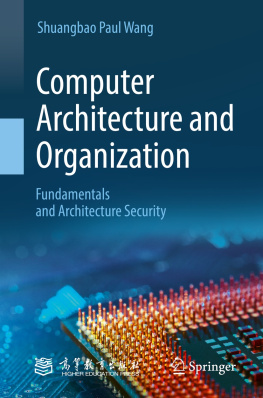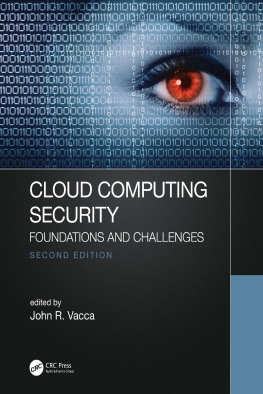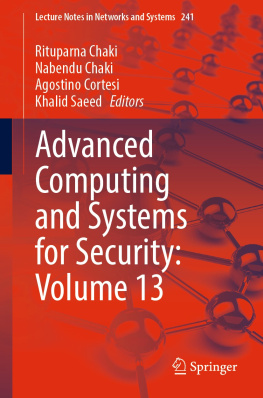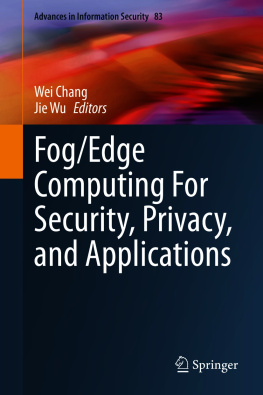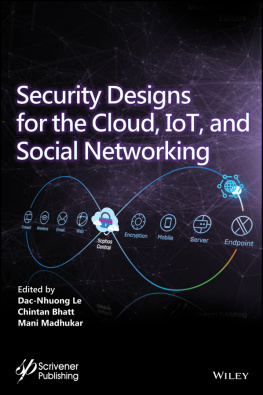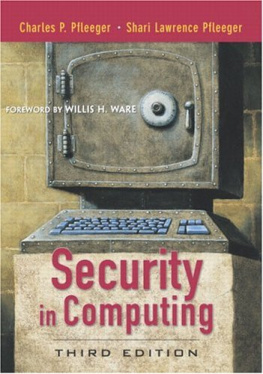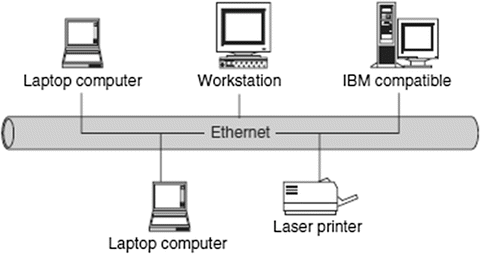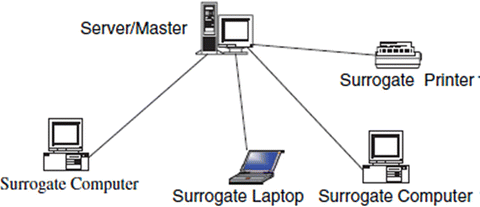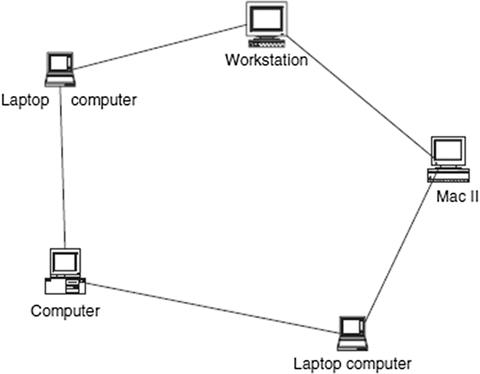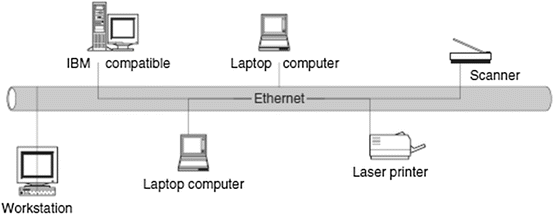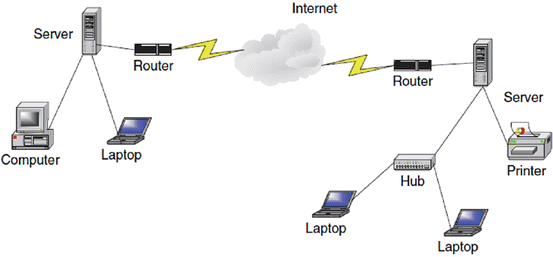1.1 Introduction
The basic ideas in all types of communication are that there must be three ingredients for the communication to be effective. First, there must be two entities, dubbed a sender and a receiver. These two must have something they need to share. Second, there must be a medium through which the sharable item is channeled. This is the transmission medium. Finally, there must be an agreed-on set of communication rules or protocols. These three apply to every category or structure of communication.
In this chapter, we will focus on these three components in a computer network. But what is a computer network? The reader should be aware that our use of the phrase computer network , from now on, will refer to the traditional computer network. A computer network is a distributed system consisting of loosely coupled computers and other devices. Any two of these devices, which we will from now on refer to as network elements or transmitting elements without loss of generality, can communicate with each other through a communication medium. In order for these connected devices to be considered a communicating network, there must be a set of communicating rules or protocols each device in the network must follow to communicate with another device in the network. The resulting combination consisting of hardware and software is a computer communication network or computer network in short. Figure shows a computer network.
Fig. 1.1
A computer network
The hardware component is made of network elements consisting of a collection of nodes that include the end systems commonly called hosts and intermediate switching elements that include hubs, bridges, routers, and gateways that, without loss of generality, we will call network elements.
Network elements may own resources individually, that is, locally or globally. Network software consists of all application programs and network protocols that are used to synchronize, coordinate, and bring about the sharing and exchange of data among the network elements. Network software also makes the sharing of expensive resources in the network possible. Network elements, network software, and users all work together so that individual users can exchange messages and share resources on other systems that are not readily available locally. The network elements, together with their resources, may be of diverse hardware technologies and the software may be as different as possible, but the whole combination must work together in unison.
Internetworking technology enables multiple, diverse underlying hardware technologies and different software regimes to interconnect heterogeneous networks and bring them to communicate smoothly. The smooth working of any computer communication network is achieved through the low-level mechanisms provided by the network elements and high-level communication facilities provided by the software running on the communicating elements. Before we discuss the working of these networks, let us first look at the different types of networks.
1.2 Computer Network Models
There are several configuration models that form a computer network. The most common of these are the centralized and distributed models. In a centralized model, several computers and devices are interconnected and can talk to each other. However, there is only one central computer, called the master, through which all correspondence must take place. Dependent computers, called surrogates, may have reduced local resources, such as memory, and sharable global resources are controlled by the master at the center. Unlike the centralized model, however, the distributed network consists of loosely coupled computers interconnected by a communication network consisting of connecting elements and communication channels. The computers themselves may own their resources locally or may request resources from a remote computer. These computers are known by a string of names, including host, client, or node. If a host has resources that other hosts need, then that host is known as a server. Communication and sharing of resources are not controlled by the central computer but are arranged between any two communicating elements in the network. Figures show a centralized network model and a distributed network model, respectively.
Fig. 1.2
A centralized network model
Fig. 1.3
A distributed network model
1.3 Computer Network Types
Computer networks come in different sizes. Each network is a cluster of network elements and their resources. The size of the cluster determines the network type. There are, in general, two main network types: the local area network (LAN) and wide area network (WAN).
1.3.1 Local Area Networks (LANs)
A computer network with two or more computers or clusters of network and their resources connected by a communication medium sharing communication protocols and confined in a small geographical area, such as a building floor, a building, or a few adjacent buildings, is called a local area network (LAN). The advantage of a LAN is that all network elements are close together so the communication links maintain a higher speed of data movement. Also, because of the proximity of the communicating elements, high-cost and high-quality communicating elements can be used to deliver better service and high reliability. Figure shows a LAN network.
1.3.2 Wide Area Networks (WANs)
A wide area network (WAN), on the other hand, is a network made up of one or more clusters of network elements and their resources, but instead of being confined to a small area, the elements of the clusters or the clusters themselves are scattered over a wide geographical area as in a region of a country or across the whole country, several countries, or the entire globe like the Internet. Some advantages of a WAN include distributing services to a wider community and availability of a wide array of both hardware and software resources that may not be available in a LAN. However, because of the large geographical areas covered by WANs, communication media are slow and often unreliable. Figure shows a WAN network.
1.3.3 Metropolitan Area Networks (MANs)
Between the LAN and WAN, there is also a middle network called the metropolitan area network (MAN) because it covers a slightly wider area than the LAN but not so wide as to be considered a WAN. Civic networks that cover a city or part of a city are a good example of a MAN. MANs are rarely talked about because they are quiet often overshadowed by cousin LAN to the left and cousin WAN to the right.

